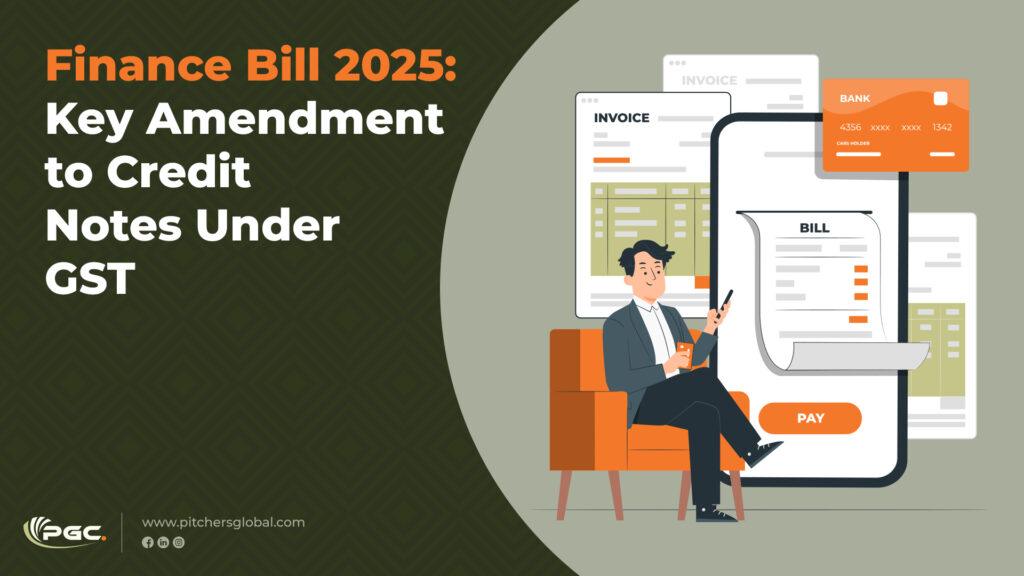
What Are Credit Notes Under GST?
A credit note is a document issued by a supplier when there is a need to adjust the taxable value or tax liability associated with a supply of goods or services. According to Section 34(1) of the CGST Act, 2017, a supplier can issue a credit note in the following cases:
- The taxable value or tax charged in the invoice exceeds the actual amount payable.
- Goods are returned by the recipient.
- The goods or services supplied are found to be deficient in quality or quantity.
The legal foundation for credit notes is clearly stated in the CGST Act, ensuring that businesses can correct invoicing errors while maintaining compliance with tax regulations.
Amendment Introduced in Section 34(2) by the Finance Bill, 2025
Clause 121 of the Finance Bill, 2025 proposes an amendment to Section 34(2) of the CGST Act, which directly impacts how credit notes affect a supplier’s tax liability. The updated provision states:
“A registered person issuing a credit note for a supply of goods or services must declare its details in the return for the month in which it is issued. However, this must be done no later than November 30 following the end of the financial year in which the supply was made, or the date of furnishing the relevant annual return, whichever is earlier.”
“No reduction in output tax liability shall be allowed if the tax and interest on such supply have been passed on to another person.”
Finance Bill 2025 – Key Takeaways from the Amendment:
- Stricter conditions for tax reduction – Suppliers can only reduce their output tax liability using a credit note if:
- The recipient has reversed the Input Tax Credit (ITC) associated with the supply.
- The tax burden has not been passed on to another person.
- Reinforcement of tax compliance – The amendment strengthens the provision that prevents double benefits where the recipient claims ITC while the supplier reduces tax liability.
- Alignment with GST principles – The change brings greater consistency between credit note provisions and ITC adjustments, ensuring fair tax practices.
Finance Bill 2025 – Impact of the Amendment on Businesses
For Suppliers:
- They must ensure that the recipient has reversed ITC before issuing a credit note to claim a tax liability reduction.
- More rigorous compliance measures will be required to track tax adjustments and credit note applications.
For Recipients:
- Businesses receiving goods/services must be aware that they cannot claim ITC if the supplier intends to adjust tax liability using a credit note.
- Proper reconciliation of ITC claims and supplier credit notes is necessary to avoid compliance issues.
Alignment with Section 15(3) of the CGST Act, 2017
The amendment to Section 34(2) aligns closely with Section 15(3)(b)(ii) of the CGST Act, which governs how discounts and value reductions are treated under GST. Section 15(3) specifies that certain deductions are allowed only if they are agreed upon before or at the time of supply. The new credit note provision similarly ensures that tax benefits are granted only in fair and transparent conditions.
Conclusion
The amendment to Section 34(2) of the CGST Act, 2017, introduced in the Finance Bill, 2025, brings about a major shift in how credit notes can be used under GST. By imposing clear restrictions on tax liability reductions, the change prevents potential misuse and ensures greater compliance with GST laws.
Key Takeaways:
✔ Suppliers must verify ITC reversal before reducing tax liability.
✔ More structured tax reconciliation is now necessary.
✔ Better alignment with GST valuation and compliance principles.
With this amendment, businesses need to stay proactive in monitoring their ITC claims and credit note processes to ensure seamless compliance with the new rules.
Contact Pitchers Global for More!
